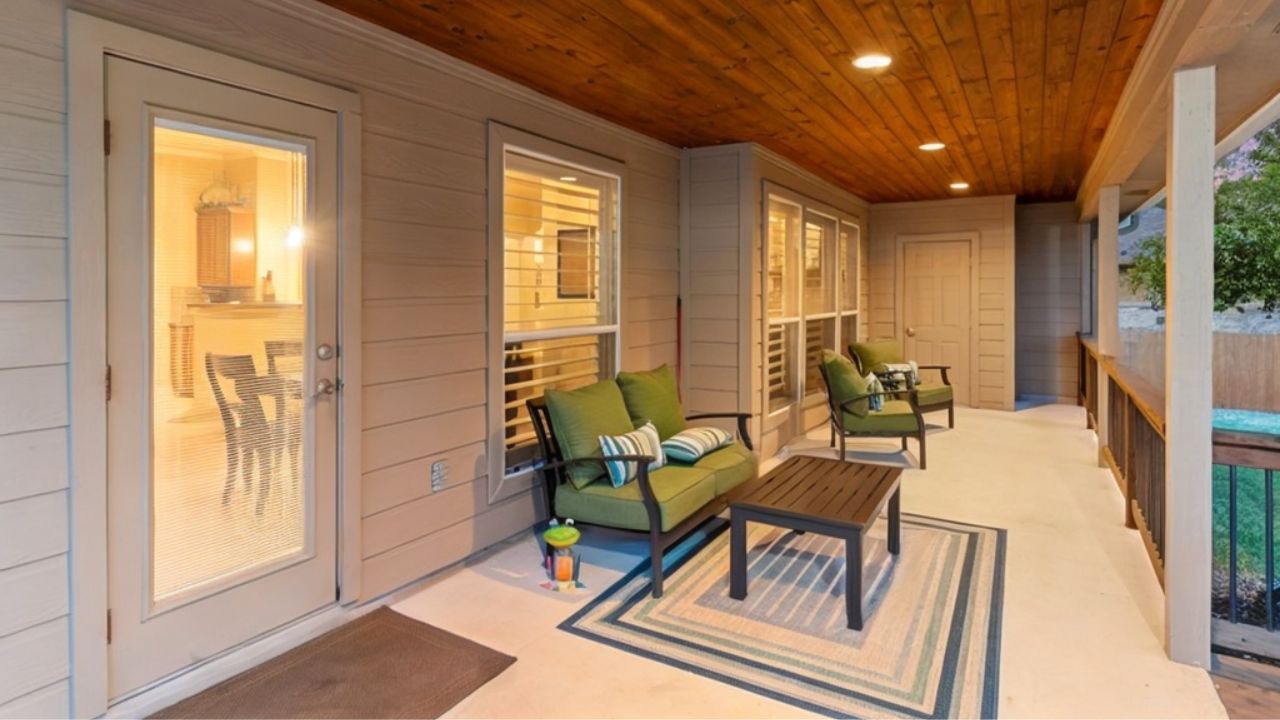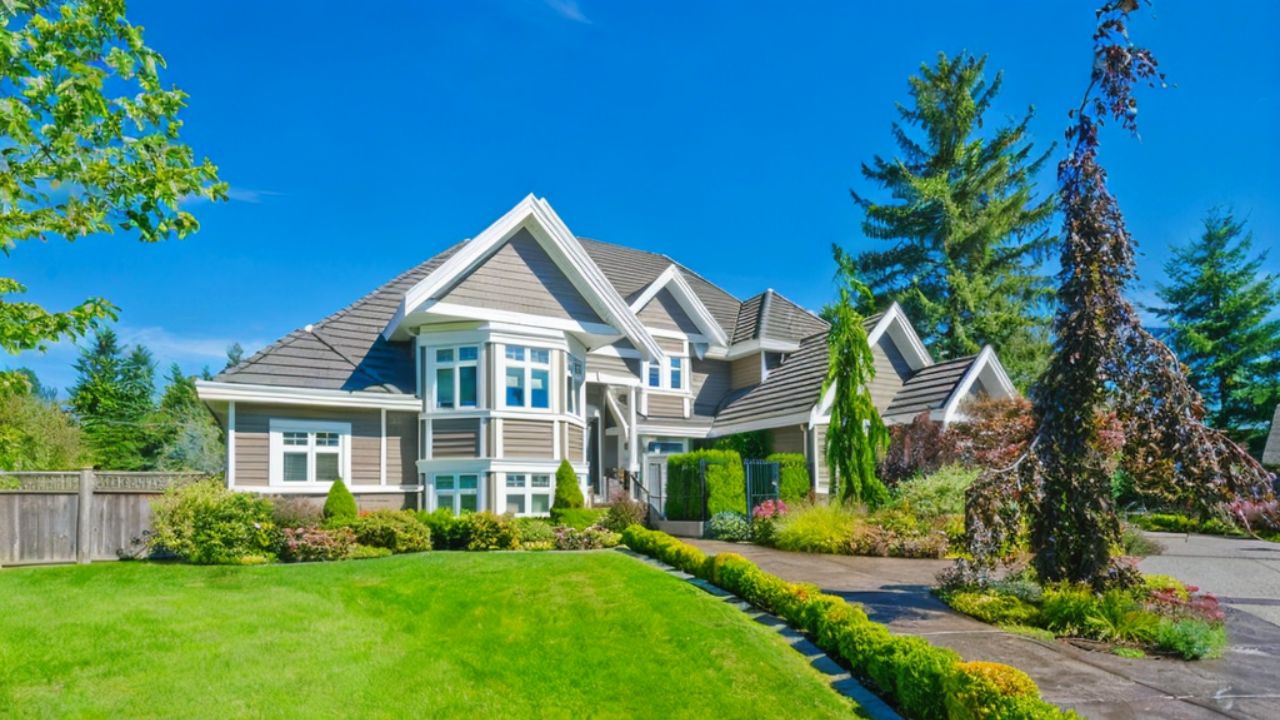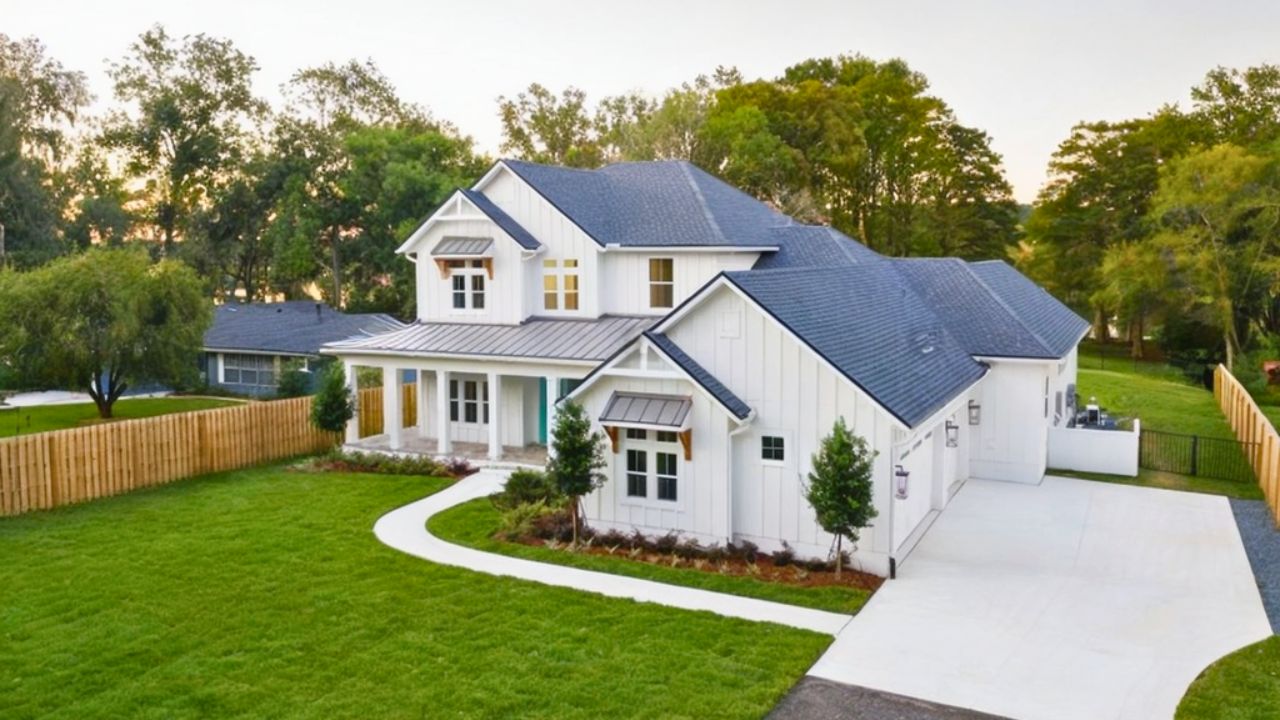What your home says before anyone even walks inside
People start forming an opinion from the street. You don’t need perfect landscaping or expensive fixtures—just a few cues that say the house is cared for and ready to host real life. Think of curb view as your handshake.
Give the eye a clear place to land
From the street, a front door should be the lead singer. If your house color and door color are fighting, the whole facade feels busy. Choose a door color that contrasts the siding just enough to stand apart, then repeat that color once—planter, doormat border, or house numbers—so it feels like a decision, not a lucky guess.
Make the path obvious and kind
People relax when they know where to walk. Pressure wash the walkway, edge the grass off the concrete, and add a simple solar light run that doesn’t feel like a runway. If you have steps, one warm wall light at knob height beats two bright floods that make everyone squint.
Tidy the porch without sterilizing it

A too-empty porch reads unfinished; a cluttered one reads stressful. Keep one seating moment (two chairs and a small table) and one plant with a real scale, not five tiny pots. If you have a ceiling fan, clean the blades and install a warm bulb. It’s the little things that make “we live here” look like “we take care of this.”
Upgrade touchpoints people actually touch
Doorknob, deadbolt, doorbell, mailbox, and house numbers should share a finish. If you can only replace one, do the handle set first—wobbly hardware sets the tone before anyone crosses the threshold. A solid lever and a door that doesn’t stick feel more high-end than any wreath you could buy.
Keep the threshold clean and honest
A doormat as wide as the door and a washable rug inside handle more dirt than three little mats ever will. If leaves pile in one corner, that’s a cue for a small broom and a hook right by the frame. Systems beat seasonal sprints every time.
Manage what’s visible through the glass
If you can see straight into the living room, what’s inside becomes part of curb view. Angle a chair slightly away from the door so the first thing you see is a calm vignette, not cord clutter or a toy pile. A lamp on a timer in that view makes evenings look welcoming without blinding the street.
Let landscaping frame, not hide

Trim shrubs below sill height so windows still read as windows. Mulch with clear edges, not a million little plant types that confuse the eye. One tree, one hedge, and one seasonal planter is plenty for most homes. When the architecture shows, the house looks more expensive without changing anything structural.
Like Fix It Homestead’s content? Be sure to follow us.
Here’s more from us:
8 upgrades that look like you spent thousands (but didn’t)
9 small changes that instantly make a house feel high-end
*This article was developed with AI-powered tools and has been carefully reviewed by our editors.







